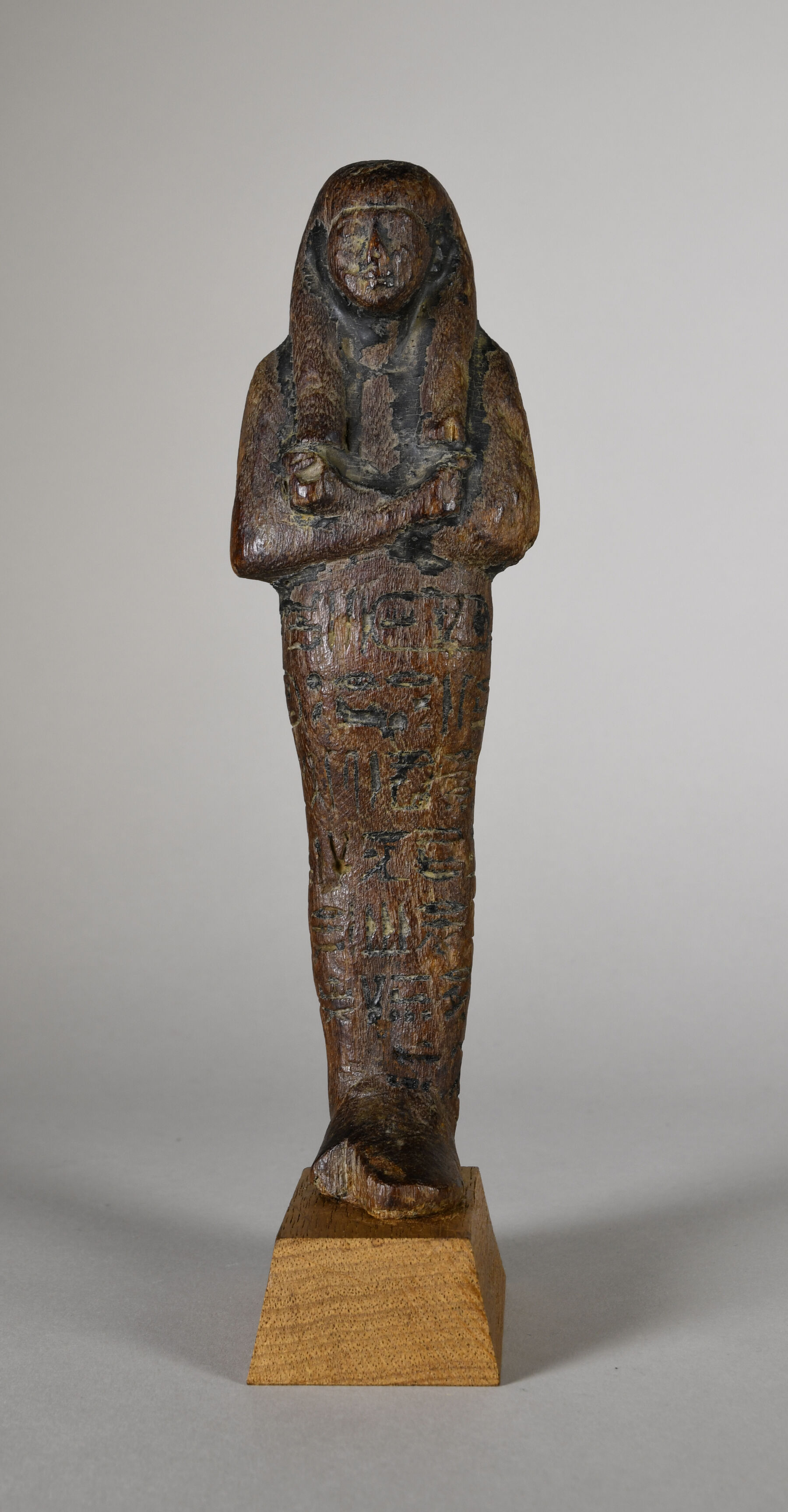The shabti belonged to King Sety I, the second king of Dynasty 19. When Giovanni Belzoni excavated KV 17 in 1815, he discovered numerous shabtis of Sety I strewn across the floor.1 Their exact number was not recorded.2 The king’s wooden shabtis were coated with resin, known as “black varnish,” symbolizing the god Osiris and life after death.3 Reports of resin-covered wooden shabtis being used as torches to illuminate the tomb make it likely that the actual number of shabtis may never be known.
This wooden shabti shows the king wearing a lappet wig. His clenched fists extend outside the mummy wrappings, but nothing is visible within the king’s grasp. Stretching from the elbows to the ankles of the mummiform figure is an inscription that includes Sety’s prenomen, Menmaatre, and nomen, Sety Meryenptah (“beloved of Ptah”) in cartouches. It is then followed with a condensed version of the shabti spell.
EW
-
Janes, G. 2020. The Amasis Collection: Shabtis and Other Artefacts from Ancient Egypt. Lymm: Olicar House.. ↩︎
-
Schneider, H.D. 1977. An Introduction to the History of Ancient Egyptian Funerary Statuettes with a Catalogue of the Collection of Shabtis in the National Museum of Antiquities at Leiden, vol. 2. Leiden: Rijksmuseum van Oudheden.. ↩︎
-
Schneider, H.D. 1977. An Introduction to the History of Ancient Egyptian Funerary Statuettes with a Catalogue of the Collection of Shabtis in the National Museum of Antiquities at Leiden, vol. 1. Leiden: Rijksmuseum van Oudheden.. ↩︎
Bibliography
- Janes 2020
- Janes, G. 2020. The Amasis Collection: Shabtis and Other Artefacts from Ancient Egypt. Lymm: Olicar House.
- Schneider 1977a
- Schneider, H.D. 1977. An Introduction to the History of Ancient Egyptian Funerary Statuettes with a Catalogue of the Collection of Shabtis in the National Museum of Antiquities at Leiden, vol. 1. Leiden: Rijksmuseum van Oudheden.
- Schneider 1977b
- Schneider, H.D. 1977. An Introduction to the History of Ancient Egyptian Funerary Statuettes with a Catalogue of the Collection of Shabtis in the National Museum of Antiquities at Leiden, vol. 2. Leiden: Rijksmuseum van Oudheden.
